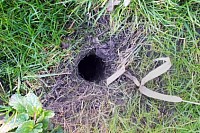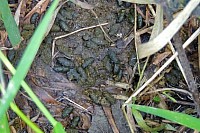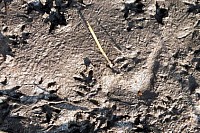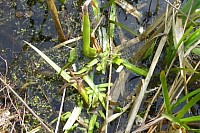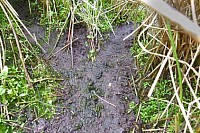Vole Hunter’s Guide
Guide to help confirm the presence of water voles.
.
Burrows
Burrows: about the same diameter as a Pringles tube. Water voles dig upwards from below so entrances are tidy, without spoil heaps outside. Grass around the entrance is often clipped short.
Latrines
Latrines: droppings are Ti-Tac shaped but slightly larger (8 - 12 mm), and range in colour from olive green to black depending on freshness. Both sexes leave piles of droppings to mark territory, though females make more latrines than males.
Footprints
Footprints: similar size to a rat so can be tricky to identify, but there's a starry shape to a water vole's paw as the extreme toes splay out on both sides.
Feeding
Feeding: look for vegetation consistently cut at a 45 degree angle and left lying in piles. Water voles also make "lawns" by grazing the top of banks, especially near burrows.
